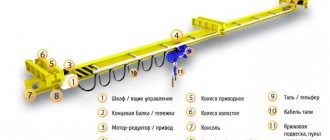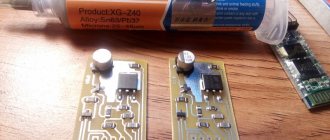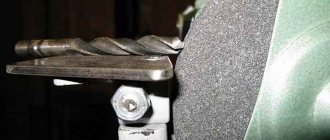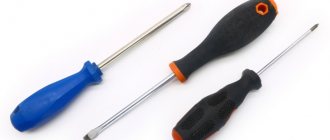Man first became acquainted with magnets in ancient times. However, very quickly this natural stone ceased to satisfy people's needs. It was then that the technology for making magnets was developed. Of course, a lot of time has passed since then. Technology has changed significantly, and now it is possible to make a magnet at home. You don't need any special skills or knowledge to do this. It is enough to have all the necessary materials and tools at hand. So, making a magnet looks like this.
Soft magnetic materials
All materials capable of magnetization can be divided into soft magnetic and hard magnetic. There is a significant difference between them. Thus, soft magnetic materials do not retain magnetic properties for long.
You can conduct an experiment: run iron bars over a strong magnet several times. As a result, the material will acquire the properties of attracting other metal objects. However, the manufacture of a magnet that constantly possesses these abilities is impossible in this case.
How can you demagnetize a neodymium magnet at home?
In order for a neodymium magnet to stop magnetizing and lose all its strength, you need to apply a very strong physical impact in the form of an impact, or heat the material at a high temperature. This type of magnet has a composition that does not allow it to withstand powerful impacts and heating reaching a high temperature level.
For example, when you hit a neodymium magnet with a hammer, you can hope that it will lose its own magnetic power. Or, if you heat such a magnet to a temperature exceeding eighty degrees Celsius, it will weaken. Many products made from neodymium material have such features. True, there are also exceptional products that can withstand heating up to two hundred degrees above zero.
In fact, you need to use neodymium magnets in a very careful way, since then you won’t have to think about how to attach such a magnet if it loses all its qualities. Naturally, such products should not be subjected to powerful impacts, nor should they be heated at high temperatures. In cases where a neodymium magnet becomes demagnetized, you simply need to throw it away.
There is no need to subject the product to certain changes in terms of shape. If you try to change the model of the magnet, you may lose all magnetic properties and also get burns, since when sawing the product, the material may start to ignite.
When the complete structure of the protective shell, created from zinc or nickel material, is damaged, corrosion begins to appear. In situations where a neodymium magnet demagnetizes on its own, this requirement can be violated.
Checking whether the strength of a magnet decreases without suitable instruments is an impossible task. In order not to think about how to magnetize a neodymium magnet, it is best to take into account all the requirements for using this material.
Method one
This method is considered the simplest. It is enough to hold a magnetized object several times in one direction against a permanent strong magnet. That's all. However, it should be taken into account that magnets made using this method do not hold a magnetic field for long and very quickly lose their properties. Such products are suitable only for simple manipulations. For example, such a magnet can help remove a needle that has fallen out of a crack or tighten bolts, but nothing more. Therefore, this method should not be seriously considered.
Safety precautions when working with strong magnets
Improper handling of powerful magnets can result in personal injury and life-threatening damage. When attracted to each other, they move with great acceleration and can pinch fingers or make a dent on an easily damaged surface. Neodymium products are very fragile, and when struck or dropped, sharp fragments break off. Never attempt to split, cut or drill into them. Drilling products can easily ignite. Magnets affect the operation of some devices, magnetic media, and pacemakers. Do not place them near credit cards, telephones, electronic devices, mechanical watches, CRT monitors, televisions, floppy disks, or cassette tapes. Keep them out of the reach of children (!).
Method two
The production of permanent magnets can be carried out in another way. This requires a battery. With its help you can magnetize any suitable material. This is done quite simply and does not require special tools. An electromagnet gives a metal object magnetic properties.
Let's look at an example with a screwdriver. To begin with, the tool should be wrapped in an insulator, and then wound about 300 turns of wire. It is better to use the one that is used for the manufacture of transformers. After this, the wire must be connected to a battery or battery, preferably 5-12 volts. As a result of such manipulations, the electromagnetic field will magnetize the screwdriver.
Restoration of permanent magnets
Permanent magnets used in ignition systems of boat engines lose their magnetic properties over time. The magneto cannot provide the necessary spark power, which makes starting the engine much more difficult. To magnetize a permanent magnet, as a rule, a winding is wound around it, through which a current pulse from a powerful source is passed (usually a fused wire jumper is used). But in magnetos of internal combustion engines, the magnets are attached to the inner surface of the flywheel with rivets, which makes them difficult to dismantle. In the absence of special technological equipment, problems arise related to the accuracy of installation and the reliability of attaching the magnet to the flywheel.
To restore permanent magnets without removing them from the flywheel, a method has been developed and tested in practice to solve this problem at home. To do this, it is necessary to perform the following operations: assemble the installation according to the diagram (Fig. 1); to measure relative changes in the magnetic field; make a magnetic diode sensor [1], in the absence of magnetic diodes you can get by with a school compass; remove the ignition coil from the base of the magneto, remove the iron core; wind 1000 turns of PEV wire with a diameter of 0.8 mm over the core on a temporary frame (coil L1 in diagram Fig. 1); Place a compass on the corner of a table, away from radiators and other metal objects, oriented so that the arrow is at the zero mark of the scale; place the flywheel with coil L1 at a distance of 3040 cm from the compass (closer to the middle of the table); by rotating the flywheel, achieve maximum deflection of the compass needle; by changing the distance between the flywheel and the compass, ensure that the northern end of the compass needle is deflected by 4...6 degrees towards the flywheel (Fig. 2); attach coil L1 to the magnet so that the ends of its iron core are connected to the pole pieces of the magnet, closing the magnetic circuit; Having set the autotransformer T1 engine to the minimum output voltage position, turn on switch SA1; smoothly turn the autotransformer knob to a position at which the voltage on capacitor C1 reaches 1900...2000V; turn off SA1, turn on SA2, while capacitor C1 is discharged through diodes VD2...VD7 and coil L1, creating a powerful magnetizing current pulse; by removing coil L1, determine the new position of the compass needle. If the deviation from the zero mark has increased, repeat the magnetization cycles until the needle deviation reaches its maximum value and new current pulses increase the magnet field. If the compass needle has moved in the other direction, then it is necessary to swap the leads of the L1 coil and continue magnetization; upon completion of work, completely disconnect the installation from the 220 V network; capacitor C1 must be completely discharged; disconnect the L1 coil from the installation, replace the iron core with the standard ignition coil and assemble the magneto. Details and design. The installation uses a laboratory autotransformer LATR2(T1). A standard 220V/6kV is used as a high-voltage transformer T2, used to power gas-light advertising. Capacitor C1 type K7511 for an operating voltage of 2000 V. A microammeter with a scale of 50 μA is used as device R1, the total deflection of the instrument needle corresponds to 5000 V. Resistor R2 type KEV1, can be replaced with a chain of series-connected resistors of any type, the total resistance of which is 100 MΩ Switch SA2 should provide safe high voltage switching; it is possible to use a switch with a protective casing. Replace damping diodes VD2...VD7 with diodes of a different type, capable of withstanding pulse currents of up to several tens of amperes with a permissible reverse voltage of more than 1000 V. Installation of the installation and work with it must be carried out in strict accordance with safety regulations. If you do not have experience working with high-voltage equipment, you must contact a specialist who is certified to work on electrical installations with voltages above 1000 V.
File:
Tweet Like
- Previous post: Voltage indicator
- Next post: Aqueous glycol solutions
- MOTORCYCLE HEADLIGHT DISCONNECT INDICATOR (0)
- CAR RADIO SLEEP TIMER (0)
- Simple "indicator stick" (0)
- Newton of electricity (0)
- Reflex receiver on one transistor (0)
- Measurements made with a heterodyne resonance meter (0)
- Copenhagen physics professor Hans Oersted was losing his last hope (0)
Related posts:
Method three
Making a magnet may seem like a daunting task. Since the above methods do not guarantee that the properties will be maintained for a long time. A stronger magnet can be created using an inductor coil. The metal blank must be small, since it will need to be placed inside the coil. After this, you should follow exactly the same procedure as indicated in the previous method. The only difference is that you need to make twice as many turns of wire, that is, 600. Only in this case can you get a good magnet.
Is it possible to make neodymium magnets with your own hands?
Industrial technology, in addition to sintering the mass into an alloy, also involves a complex process of magnetization of the resulting substance, which is inaccessible for home conditions. Very powerful force fields are used for this. If you have a great desire to obtain neodymium magnets yourself, you can do this yourself by disassembling “obsolete” electronics.
In some old hard drives you can find one or two small elements inside. It is not advisable to try to drill or crush such magnets. The surface protective layer is damaged, the material reacts with the environment and loses its properties. In addition, as experts say, the shavings are highly flammable and can ignite surrounding surfaces.
We advise you to study the division of circuit breakers according to time-current characteristics
Method four
The manufacture of a magnet in this case involves the use of current from the electrical network. This method is quite dangerous, so all manipulations should be performed carefully and carefully. We will need a fuse, without which nothing will work. It must be connected in series with an inductor coil, inside of which there is a metal workpiece.
Of course, when such a design is connected to the network, the fuse will blow. However, during this short period of time, the metal workpiece will have time to charge, since in this case a fairly strong electromagnetic field is created. Here it is worth considering one nuance: the higher the current strength, the stronger the magnet will be. To wind the coil you should use only copper wire.
Types of fields in magnetic therapy
Several types of magnetic fields are used:
- Variables - appear in the coil when an alternating electric current is passed through.
- Permanent - when passing a direct electric current or from fixed permanent magnets.
- Pulse - changing in strength, but stable in direction.
- Traveling pulsed - implemented by sequentially switching on coils, so the field moves in space.
- High-amplitude pulse - occurs at a high voltage current with an ultra-short duration. Unlike other fields, they can excite nerve fibers and stimulate muscles.
The general therapeutic effect is associated with nonspecific reactions of the nervous, immune and humoral regulatory systems, the body's reserves and compensatory-adaptive mechanisms are activated. The question arises: is it possible to carry out such procedures at home, without visiting medical institutions?
Typically, a course of magnetic therapy is carried out as part of a rehabilitation program.









